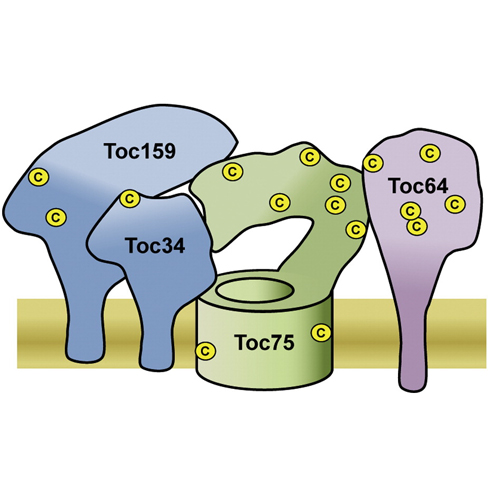Redox meets protein trafficking
24-Jan-2015
Biochimica et Biophysica Acta, 2015, doi:10.1016/j.bbabio.2015.01.010, published on 24.01.2015
Biochimica et Biophysica Acta, online article
Biochimica et Biophysica Acta, online article
After the engulfment of two prokaryotic organisms, the thus emerged eukaryotic cell needed to establish means of communication and signaling to properly integrate the acquired organelles into its metabolism. Regulatory mechanisms had to evolve to ensure that chloroplasts and mitochondria smoothly function in accordance with all other cellular processes. One essential process is the post‐translational import of nuclear encoded organellar proteins, which needs to be adapted according to the requirements of the plant. The demand for protein import is constantly changing depending on varying environmental conditions, as well as external and internal stimuli or different developmental stages. Apart from long-term regulatory mechanisms such as transcriptional/translation control, possibilities for short-term acclimation are mandatory. To this end, protein import is integrated into the cellular redox network, utilizing the recognition of signals from within the organelles and modifying the efficiency of the translocon complexes. Thereby, cellular requirements can be communicated throughout the whole organism. This article is part of a Special Issue entitled: Chloroplast Biogenesis











